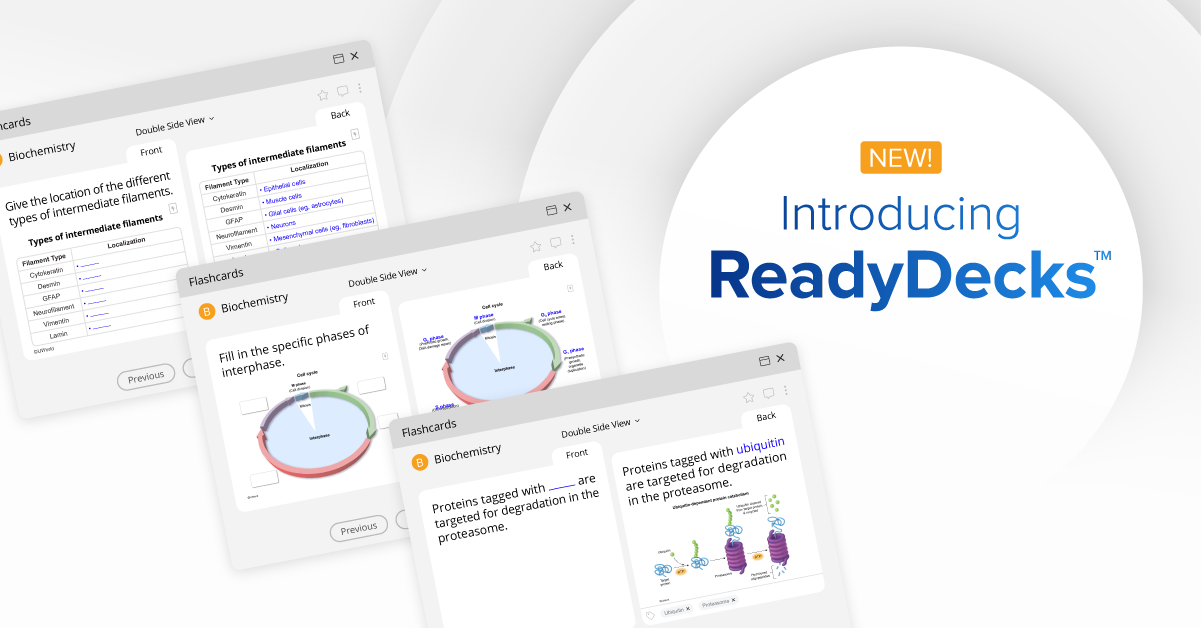By: Eric Lai, Current M3
The USMLE Step 1 exam is a daunting prospect that no one really likes to talk about, but not talking about it doesn’t make it go away. Instead of avoiding thoughts of Step 1, I chose to face Step 1 preparation early and started using UWorld’s question bank (QBank) near the beginning of my second preclinical year. Not only did UWorld prove invaluable for my study preparation, but it also helped me significantly with my M2 curriculum. Because I had such a good experience with UWorld, I’d like to share my tips for navigating the UWorld QBank with you.
Getting Started Early
When thinking about study preparation strategies, practicing questions should undoubtedly be at the top of your priority list. Many resources provide practice questions; however, as you likely already know, the UWorld USMLE Step 1 QBank consistently ranks at the top.
There are multiple ways to approach the UWorld QBank. Some students advocate using it as a learning resource, while others save it for use as an assessment tool near the end of their preparation. I was advised to start using UWorld as soon as possible and in conjunction with my classes, and this is the approach I highly recommend to everyone.
There is a vast amount of information in the Step 1 QBank and you can access so much high-yield learning by reading the answer explanations and understanding the terrific graphics and tables. If the UWorld QBank is the closest thing to the actual exam, why not spend as much time as possible using it to get comfortable with the exam’s features, format, and question styles?
Getting Comfortable With the Uncomfortable
Some students put off practice questions until the end of their study plan because they feel the need to learn and review the content before assessing their understanding. They think, “How am I supposed to answer questions if I haven’t learned the material yet? Won’t I be wasting the questions?” They also figure that getting questions wrong or seeing low percentages (because they haven’t learned the material yet) will be overly discouraging.
Although I understand these sentiments, I truly believe that most students learn best when they make mistakes. When I get a question wrong, I typically remember that question and the concept behind it better than if I had gotten it right the first time. There is an intrinsic drive within us that makes us try even harder after a mistake to ensure that we don’t make the same one again.
During my Step 1 preparation, whenever I answered a question incorrectly, I took the time to understand what went wrong and determine whether the mistake I made was due to a careless error, a gap in learned content, or a weakness in applying knowledge. Consistent practice helped me make fewer careless errors and improve my application of knowledge since I became more familiar with the range of question formats and the critical thinking they required.
When I got a question wrong because of content I hadn’t encountered yet, I took the opportunity to learn it as a first pass while keeping the information in the back of my mind. When the same concept inevitably came up in lectures, I was primed to remember it.
Getting questions wrong can certainly be unpleasant, but I believe that getting comfortable with the uncomfortableness of making mistakes early on can prevent us from repeating those same mistakes down the line. If we hone in on these mistakes, we can improve.
Using UWorld QBank Features
Whenever you decide to tackle UWorld’s massive Step 1 QBank, many options and customizations are available. You can answer the questions in a random or customized systems-based format, as well as in a timed or tutored mode. In addition, you can customize your practice test to fit what you are studying in your classes.
UWorld’s recent introduction of system categories was beneficial to me while going through my M2 curriculum. For example, when I was learning neurology and psychiatry in my classes, I also did the corresponding questions in UWorld’s QBank. The questions reinforced the information I was learning and helped me assess how well I actually understood it before my class exams.
In addition, analyzing how many questions were in each category allowed me to see how important each topic would be for Step 1; the more high-yield a topic was, the more questions there were on that topic. For example, in endocrinology, there were more questions on diabetes mellitus than any other disorder. While that didn’t mean I could ignore other topics within endocrinology, it did tell me that USMLE Step 1 really devoted a lot of attention to diabetes mellitus, meaning that it’s a high-yield topic I need to know inside and out.

UWorld’s new My Notebook feature gives you the option of creating your own set of notes that you can review easily. In my opinion, UWorld’s tables, charts, and diagrams are some of the best graphics around when it comes to explaining complex biochemical pathways or comparing/contrasting similar disorders.
There were many instances when I wanted to look specifically for UWorld’s charts to compare and contrast certain disorders, but I couldn’t just flip through UWorld like an online textbook. However, by adding choice graphics to my notebook, I was able to organize them, write explanations, and quickly find the corresponding chart—which came in handy the next time I got confused about Mallory-Weiss syndrome versus Boerhaave syndrome.

Reinforcing Learning With Flashcards
By now, most medical students have probably heard of the ultimate learning strategies known as active recall and spaced repetition. By testing ourselves periodically, difficult concepts become encoded into our long-term memory, and recalling information to the forefront of our minds becomes easier.
Flashcards are the gold standard for active recall and spaced repetition, and that’s why UWorld introduced a new Flashcards feature for students to practice these techniques. During question review, you can make flashcards with any of UWorld’s corresponding graphics, tables, and/or text. In my experience, creating and regularly reviewing your own flashcards is one of the best ways to ensure that you are continuously learning and not forgetting essential concepts.
Analyzing Your Performance
UWorld’s QBank provides personalized and detailed analyses to inform you of your areas of strength and weakness. As you do more and more questions, you can start to evaluate where you stand compared to other students’ averages and see exactly what topics you need to work on the most. UWorld’s Reports page breaks down your percent correct, percent incorrect, and even your percentile for all the questions you’ve done on a system-by-system basis.
Knowing your strengths and weaknesses can help you decide how to optimize your study time and allow you to see the most significant improvements in your score. When you zero in on your weaknesses, they can eventually become your strengths.
For more information on UWorld’s Step 1 QBank, click here.




